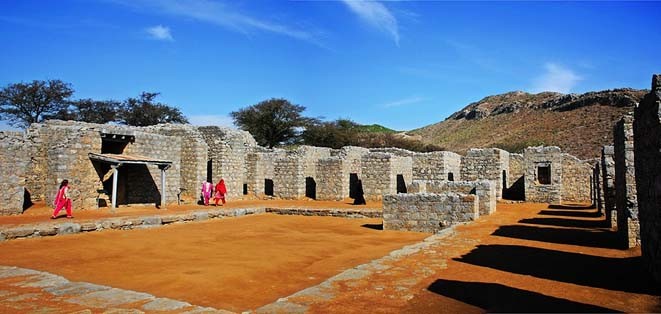
The good news is that there are still tourists in Taxila. The bad news is that being a local will not save you from getting fleeced

The 200-step stone staircase that leads to Jaulian, one of the 12 archaeological sites spread across Taxila, is a great workout. But when I cheerfully pointed out this silver lining to my friend who was climbing with me, she said, "Yes, but what if I wasn’t planning on working out today?" Fair point.
However, her annoyance at the involuntary exercise began melting at about step-100 when she turned to look at the valley and stream below us. The narrow water-body, clear and blue, was sneaking around hills and peeking under tiny bridges to create an image worthy of an Instagram you’d post just to boast.
At step-150, things took a turn for the worse. We heard a rattlesnake, and promptly imagined an Anaconda and although we continued to dash upwards, our excitement shot in the opposite direction. The staircase is built into the mountain that houses Jaulian, the ruins of an ancient Buddhist monastery and ‘university’, so it is believable that lots of creepy crawlies live there.
Finally, at the top we were greeted by a sign that delighted us: "Foreigners: Rs200. Pakistanis: Rs10". The context to this is not that we want foreigners to pay more, but that we were happy to learn the official amount the site should cost us, since we had just been guilted into paying Rs1,000 to guides at Mohra Moradu, another set of Buddhist ruins in Taxila. However, when we tried to offer our Rs 10 each to the government-employed guide waiting at the entrance, we were refused. "Pehlay dekh toh lain hamaray paas kya hai, phir aap us ki qeemat lagaye ga," he said.
All right, we said. And he began the tour, narrating a palatable mix of fact and fable.
While taking us through the ruins of the main stupa that housed numerous headless Buddha statues, and only two intact sculptures, he told us that the original plaster is only preserved in a few places. The rest of it is a mix of masala and stucco, which according to him is bad news for preservation. Our untrained eyes pretended to see the difference. Little did he know that we couldn’t even tell the difference between original statues and the ones sold at the bottom of the mountain for Rs300 a piece.
Some of the guide’s opinions and facts were sold unified, but were easy to believe: no one at a higher level cares about preservation; so much of Taxila has been looted and can be found at rich Pakistani’s houses who arrogantly believe that it’s safer with them; that one young male Pakistani tourist, even if he is a student, is more dangerous for the statues and sculptures than 100 foreign tourists who never touch or photograph without permission; and that the White Huns who ravaged Jaulian and the rest of Taxila in 500 AD were just the worst.
Other facts could be contested: One was that the grey-stoned Jaulian housed the world’s first university, given that it was flourishing in 600 BC under the Gandhara Kingdom. While it can’t be disputed that students from across the world travelled to the monastery at Jaulian to seek knowledge and consult texts, it also has to be mentioned that many civilisations claim the world’s first university for their own. Based on varying definitions of the word "university", Muslims give this honour to Al-Karaouine, located in Fes, Morocco, established in 859 AD; and the Greek have the Platonian Academy founded around 350 BC. Even within India, there is a difference of opinion between whether Jaulian or Nalada University, near Patna, should be awarded this prestige.
Another claim the guide made is that until 2001 and the war on terror, Jaulian was bursting with Buddhist visitors, who would come to pray at the monastery. "Each day would bring about ten buses full of tourists," he said. "Now we are lucky to have even one Asian tourist in a week." Even as his sentence was just finishing, a group of Asian tourists could be seen making their way towards the monastery.
I don’t mean to doubt that the amount of tourists has declined over the years, just that it’s unlikely that tourists ever numbered in hundreds a day, or that they have dwindled to zero, today. The Healing Buddha statue on its own is wondrous enough to pull religious tourists from across the Buddhist world, and the forgotten candles lying around the Healing Buddha statues are evidence to that.
When the tour was over, we were coyly asked what that trip was worth to us. It was a trap of a question and to make things less awkward we parted with much more than even ten times the ticket price. "It’s just money, it’s okay, the tour was great," I pacified myself and my friend, as we skipped down the mountain to spend more money on statues, sculptures and shiny disco balls that are curiously sold all over the area. We may have spent a lot of money in Taxila, but we gained enough culture and history to make up for it.